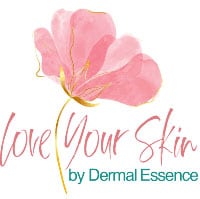
Protect from the Sun
Effects of Ultraviolet Radiation on the skin
Ultraviolet radiation from natural sunshine is beneficial to most people in small doses.
The skin’s physiological response to exposure to Ultraviolet radiation is a protective one.
- It warms the body
- Stimulates the production of Vitamin D
- Increases cellular regeneration and desquamation
- Kills bacteria on the skin.
- Promotes a feeling of wellbeing.
Ultraviolet radiation also has certain damaging effects.
- It can cause sunburn
- Overexposure to UVA causes premature ageing
- Overexposure to UVB may cause skin cancer
Types of UV Radiation
The sun emits two types of ultraviolet (UV) radiations that reach our skin.
Ultraviolet A (UVA)
and
Ultraviolet B (UVB)
Both types damage unprotected skin and understanding the difference between these two rays helps us to understand the need for broad-spectrum sun protection which we will talk about next week.
UVA and UVB are not within the spectrum of visible light that the human eye can see. Their light is measured in wavelengths called nanometres (nm) which is one-billionth of a meter.
UVA light has a wavelength of 320nm to 400nm (UVA1 measures 340nm – 400nm and UVA2 measures 320nm-340nm.
UVB light has a wavelength of 290nm to 320 nm
The effects of UVA & UVB
UVA light penetrates deep into the skin steadily destroying collagen and elastin, causing wrinkles and contributing to every type of skin cancer. UVA light can also penetrate glass. So unless you have special UV protective windscreens don’t count on being protected behind glass. UVA rays are considered to be the sun’s silent killers because their effects cannot be felt. They are the cause of tanning unless you burn first
UVB light is considered to be the burning rays and is directly responsible for sunburn and other visible changes to the skin’s surface and it also contributes to skin cancers. The UVB rays vary according to geographic location, time of day and season. As a general rule, the closer the equator you live, the more intense the sun’s rays can burn.
Both UVA and UVB light are present all year round but UVB is more prevalent in sunny climates. UVA and UVB are both reflected from sand, water and snow with UVB more damaging at higher altitudes where it is more intense than at lower altitudes. That’s, why UVB is called the burning ray but UVA is just as damaging.
Lets Recap
UVA rays are considered the sun’s silent killers because, unlike UVB rays, you do not feel the effects of UVA rays damaging your skin. UVA rays are the cause of tanning, and unless you burn first, getting a tan isn’t painful—but, those unfelt UVA rays are reaching deep into the skin, causing havoc in every layer. The UVB rays are the burning rays and are directly responsible for sunburn and physical changes on the skin.
